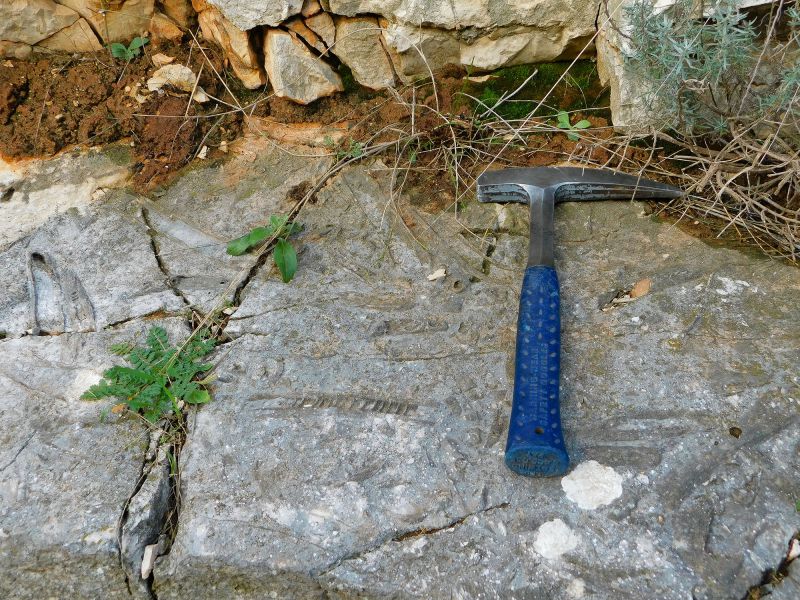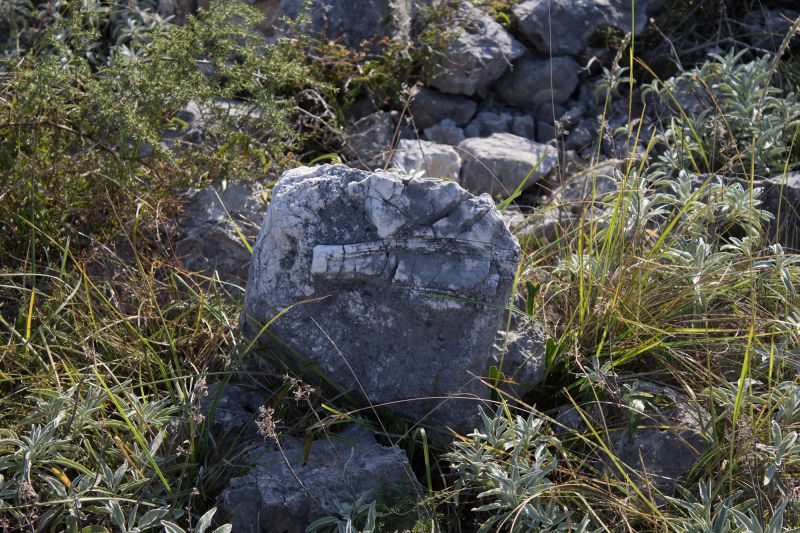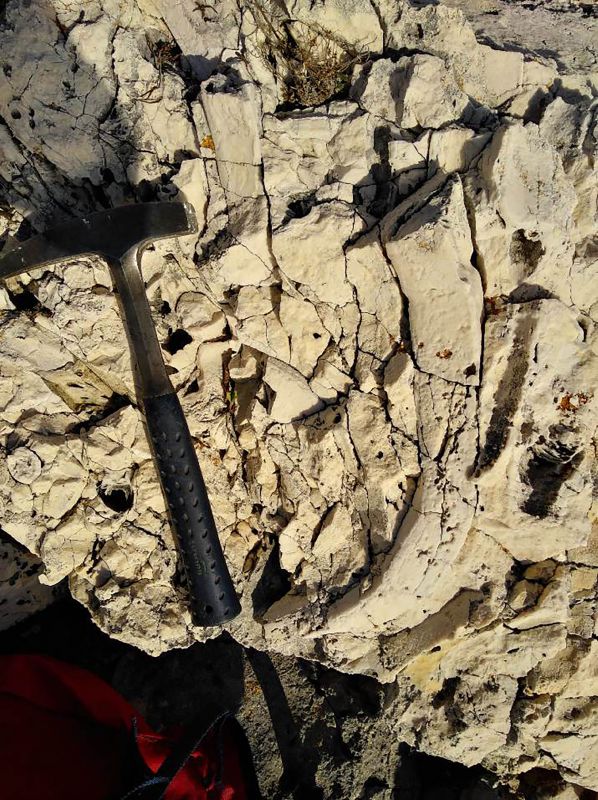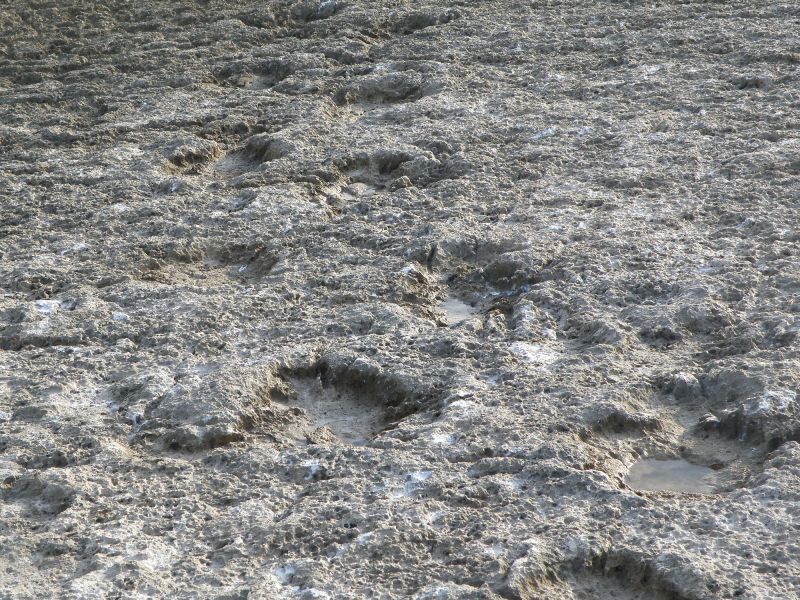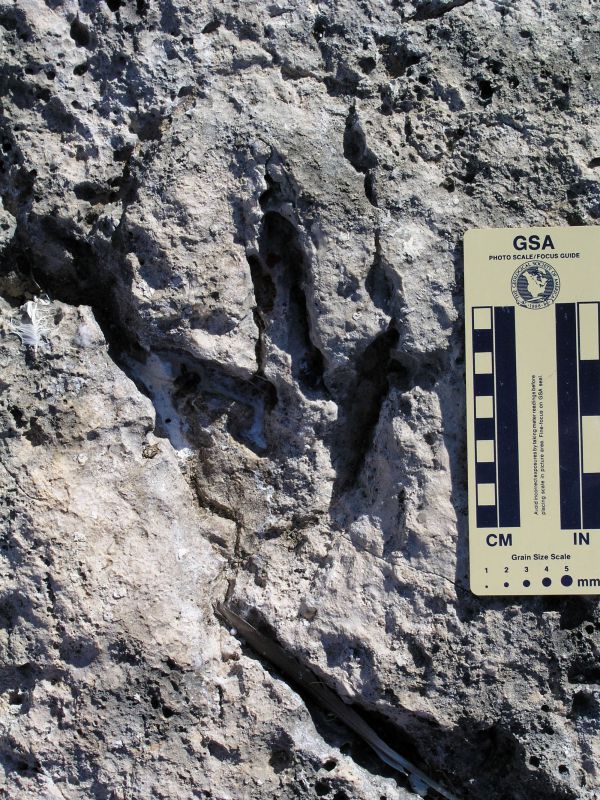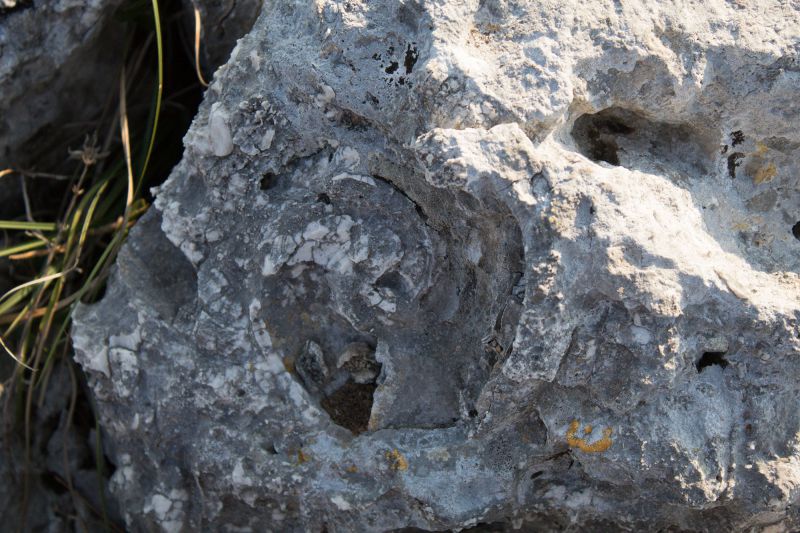The Recorded Past
Life appeared on Earth about 3.8 billion years ago and has since evolved into an innumerable number of species which amaze us time and again. Numerous fossil remains in the rocks are a time machine that takes us back to the Earth’s distant past, revealing its long-lost spaces and unusual inhabitants. One such exciting story is recorded in the grey-white limestone of Kamenjak, which had long been ruled by magnificent reptiles – dinosaurs.
Life in the Cretaceous
The limestone rocks of Kamenjak were formed by the deposition of limestone shells and the skeletons of extinct marine animals. Fossils can be found wherever the rocks are not covered in vegetation, so even a simple walk on the coast might be remembered for many discoveries along the way. Based on the fossils characteristic of certain periods, such as the foraminifera Broeckina balcanica, and other components of the microfossil community, the rocks are estimated to belong to the Cenomanian age (the late Cretaceous, 98–93 million years ago). At that time, the arrangement of the continents was already similar to the one we have today, and this area was covered by the Tethys Ocean. The climate was dry and warm, while lush tropical vegetation predominated on the mainland. There were many fern species, the gymnosperms stagnated, and the dicotyledons developed most among the angiosperms. It is assumed that present-day central and western Istria was a vast island, and the footprints found in the parts of Istria that were covered by the sea during that period suggest that animals moved freely there at low tide. While dinosaurs dominated the mainland, unusual rudist and oyster bivalves occupied the shallows. The finds of spiral shells of ammonites, an extinct group of cephalopods of the open sea, support the theory of the occasional deepening of the sea in the Kamenjak area.
 EU Projects
EU Projects English
English

